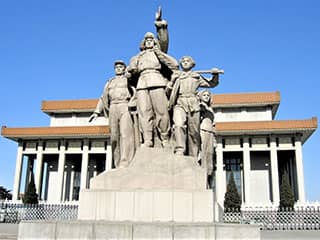The study of cultural anthropology in modern China is a compelling journey through a landscape that is continuously reshaped by historical legacies, social transformations, and economic developments. How do the myriad of cultural practices in China respond to the pressures of globalization and modernization? This question opens the door to exploring the complexities of identity, tradition, and the multifarious influences that affect contemporary Chinese society.
To begin with, understanding the nuances of Chinese culture necessitates an appreciation of its historical context. China possesses one of the longest histories of civilization in the world, with cultural practices and philosophical thoughts that extend back thousands of years. The legacy of Confucianism, Taoism, and Buddhism has fundamentally shaped societal norms, ethical values, and interpersonal relationships. Yet as modernity takes its toll, these entrenched traditions both clash and coexist with evolving paradigms of thought.
China’s rapid economic reform, commencing in the late 20th century, has not just transformed its economic architecture but has also incited significant sociocultural shifts. The emergence of a capitalist economy alongside a socialistic backdrop has engendered novel dynamics of class and cultural consumption. In urban centers like Beijing and Shanghai, a cosmopolitan lifestyle confronts lingering traditions, leading to a unique interplay of old and new. Various locales stand as microcosms that embody this tension; for instance, the contemporary art scene in Beijing reflects both Western influences and traditional Chinese motifs, creating cultural hybrids that challenge conventional boundaries.
Within this cultural tapestry, the role of the younger generation is particularly salient. Young Chinese individuals grapple with dual identities, torn between the traditional norms instilled by previous generations and the allure of modern, globalized culture. This phenomenon evokes a playful question: Are today’s youth cultural innovators or mere consumers of global trends? This inquiry highlights a potential challenge in contemporary cultural anthropology: the ability to delineate between authentic cultural expression and commodified imitation.
Furthermore, the impact of digital technology cannot be overstated. Social media platforms have transformed how cultural narratives are constructed and disseminated. Young people in China are utilizing platforms like WeChat and Douyin (TikTok) to share their identities, create content, and engage with global audiences. This digital revolution allows for greater expressions of individuality but also raises the issue of cultural homogenization. Are we witnessing a dilution of Chinese culture in favor of a more generic, globally influenced aesthetic? As such, anthropology must contend with the dynamics of digital culture, understanding how these new mediums reshape traditional forms of expression.
Paradoxically, while urbanization and globalization appear to weaken traditional cultural practices, they also lead to a renaissance of these very elements in new forms. Local festivals, folk music, and traditional crafts are being reimagined for contemporary audiences. Cultural nationalism is revived as citizens seek to reconnect with their heritage amid the cacophony of modern life. This complex relationship invites further inquiry into how modern political ideologies—especially under the governance of the Communist Party—instrumentalize cultural narratives to assert state legitimacy.
Another significant aspect that cultural anthropologists must consider is the varied ethnic compositions within China. The Han majority, constituting over 90% of the population, is often viewed as the standard bearers of Chinese culture. However, there are 55 officially recognized ethnic minorities, each with its own distinct customs, languages, and cultural practices. These groups often challenge the hegemonic narratives constructed by the Han-centric perspective, thereby enriching the cultural landscape. For instance, the Tibetan and Uighur cultures present differing views on spirituality and community, complicating the monolithic portrayal of Chinese identity. Thus arises the question: How do the cultural expressions of these minority groups contest or complement the dominant cultural narratives?
Moreover, the environmental implications of cultural practices in modern China merit examination. Rapid industrialization has precipitated significant ecological challenges, sparking movements that intertwine cultural identity with environmental stewardship. Grassroots organizations, involving local communities, are leading initiatives aimed at revamping traditional agricultural practices to be more sustainable. This fusion of cultural heritage and ecological consciousness presents an intriguing intersection for anthropological study. To what extent can cultural anthropology contribute to sustainable practices that stem from local wisdom while addressing modern ecological crises? This question underscores the relevance of cultural understanding in fostering sustainable futures.
In summation, the exploration of cultural anthropology in the context of modern China unveils a labyrinth of interactions between historical tradition and contemporary influences. The playful question of identity—are modern Chinese youth authentic cultural agents or passive recipients of global culture?—points to a larger challenge that anthropologists face in navigating this vibrant, multifaceted landscape. As cultural practices evolve amidst the pressures of globalization, the task remains to delve into the underlying currents that shape these transformations, ensuring that both the richness of tradition and the vitality of modernity coexist harmoniously.
In this intricate dance of cultural expression and identity, the role of cultural anthropology becomes all the more crucial to discerning the nuances of a society in constant flux, thereby illuminating the path forward as China contends with its past while forging its future.
